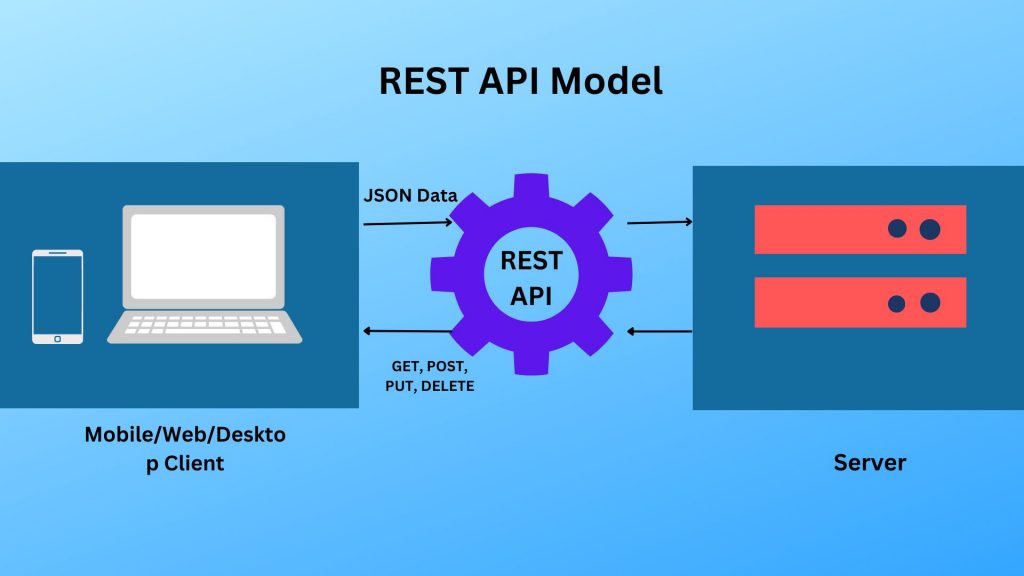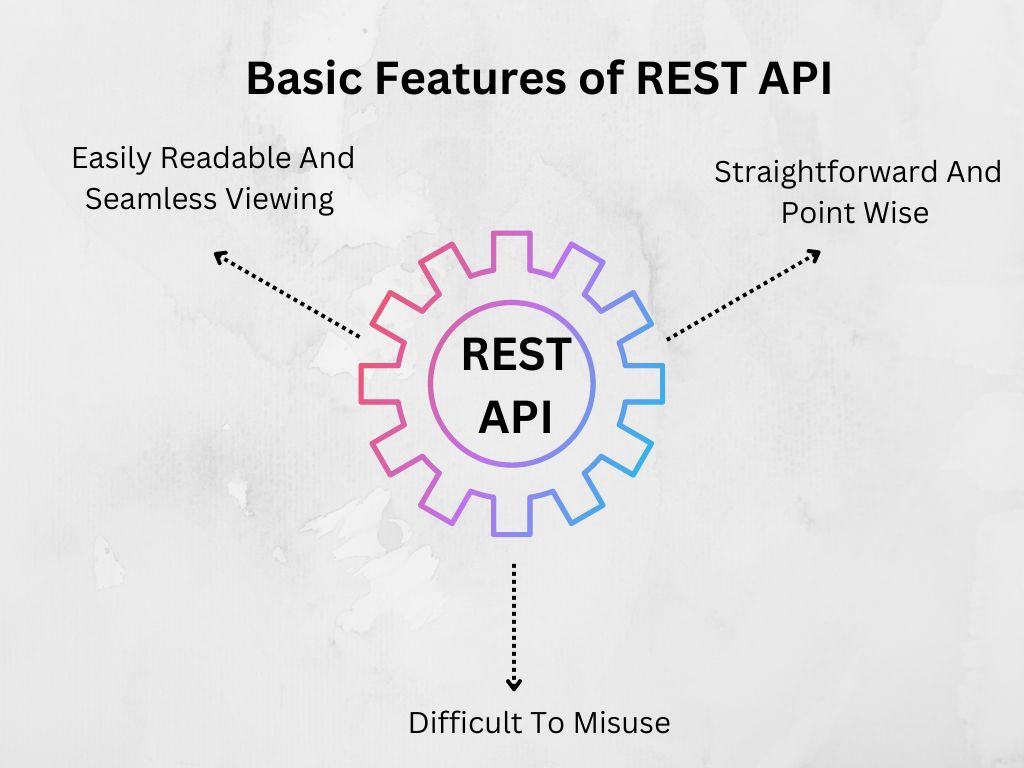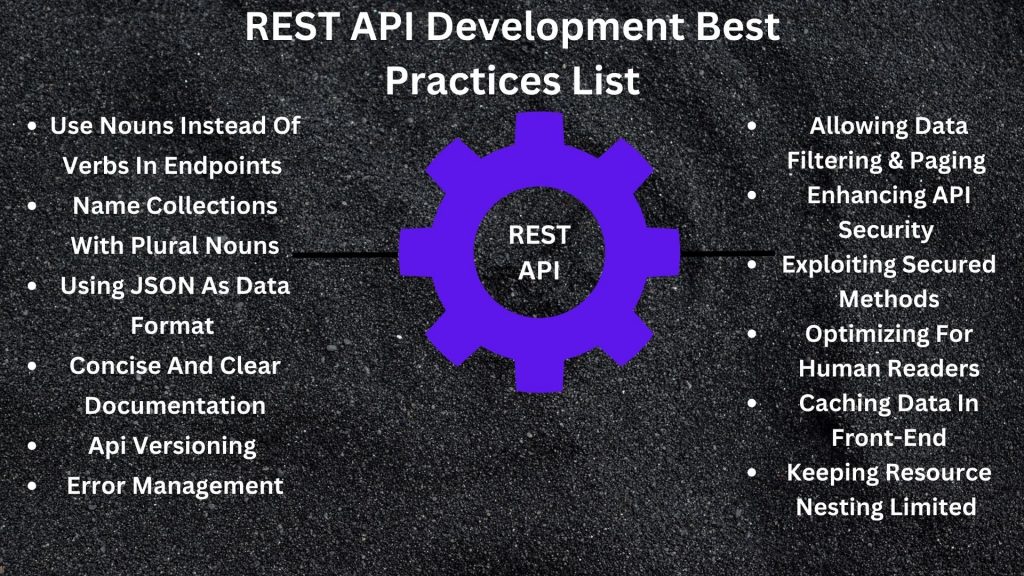REST APIs Design: An API is a set of rules that decide how web and mobile applications or devices communicate and connect with each other. Tech giants like GitHub, Netflix and Facebook are the leaders of this show as they are hiring developers with open arms to exploit their data by using APIs.
Since APIs assist programmers communicate with the data, they become more easier and comfortable for programmers. Moreover, REST APIs must be well-designed, else they can build many difficulties for programmers rather than boosting the user experience.
This is why REST API best practices must be followed when it comes to groundwork to your clients with the most efficiency.
What is REST API?
REST API is an application programming interface. It also known as RESTful API. Normally, HTTPS communication protocol access the Restful app programming interface.

Basic Features of REST API
Before entering to delving deeper into the best practices, lets take a glance at the features of REST API below,
- Easily readable and seamless viewing
- Difficult to misuse
- Straightforward and point wise

Easily Readable And Seamless Viewing
The dedicated professional developers can seamlessly work with a completely designed API, thereby creating it easy to read. Developers can recollect its resources and functions while working on it.
Difficult To Misuse
As you integrate and implement your API with a sharp and clean design, it significantly diminishes the chance of writing the wrong code. Additionally, it admin important feedback without commanding difficult guidance from the end users.
Straightforward And Point Wise
The presence of a comprehensive API helps developers to build robust and scalable applications any kind of data hazard. So, the many API developers take sufficient time to finish the entire project rather than building on existing APIs.
REST API Development Best Practices List
Below are the list of best practices of REST API design to development that we implement and have assist us in our business apps.

- Use Nouns Instead Of Verbs In Endpoints
- Name Collections With Plural Nouns
- Using JSON As Data Format
- Concise And Clear Documentation
- API Versioning
- Error Management
- Allowing Data Filtering & Paging
- Enhancing API Security
- Exploiting Secured Methods
- Optimizing For Human Readers
- Caching Data In Front-End
- Keeping Resource Nesting Limited
1.Use Nouns Instead Of Verbs In Endpoints
When you are design to develop a REST API, you should not use verbs in the endpoint paths (URLs). The URLs should use nouns, signifying what each of them does.
This is because HTTP methods like GET, PUT, POST, PATCH and DELETE are already in verb from for performing basic CRUD operations (Create, Read, Update, Delete).
GET, PUT, POST, PATCH and DELETE are the commonest HTTP verbs. There are also others like COPY, LINK, UNLINK, etc.
So, for example, an URLs should not look like this:
https://mysite.com/getPosts or https://mysite.com/createPost
Instead, it should be something like this: https://mysite.com/posts
In short, you should let the HTTP verbs handle what the URLs do. GET would retrieve data,
PUT will update data,
POST will create data,
DELETE will get rid of the data.
2.Name Collections With Plural Nouns
You can think of the data of your API as a collection of various resources from your users.
If you have an URL like https://mysite.com/post/123 , it might be okay for deleting a post with a DELETE request or updating a post with PATCH or PUT request, but it doesn’t tell the customer that there could be some other posts in the collection. Why your collections are should use plural nouns.
So, instead of https://mysite.com/post/123 , it should be https://mysite.com/posts/123 .
3.Using JSON As Data Format
JSON is the most commonly used data format similar the other formats. The syntax of JSON gives the data simple and easy to read for humans. It is quite easy to use providing simple data execution and assessment. Moreover, it comprises a entire array of supported browser compatibility.
4.Concise And Clear Documentation
Documentation is makes automatically based on API, it is essential to clear and complete documentation as at times. The documentation should be simple so as remain understandable to users.
It engaging tutorials, easily usable resources and renders guides. Clear and complete documentation is required for helping users to learn authentication, error and security management.
5.API Versioning
The best practice allows developers to create active changes in specific action of data structure. The developers get the opportunity to make more enhancements as well as changes in their service other than holding a part of the API users profiles with the help of API versioning.
This creates it slow in creating any kind of new changes. An API can become variable and unstable. Moreover, one can never avoid the changes, one should find various ways to deal with the change.
6.Error Management
Errors should be easily managed to reduce confusion for every API user. This returns the HTTP response codes that define the nature of the mistake that occurred. The API maintainers get broad data from it to evaluate the source and reason behind the problems.
If you want to maintain your system error-free, just leave them uncontrolled. Hence, the API users requirements to deal with errors. Here are a few basic error HTTP status codes:
404 Not Found – It means that there are no resources.
403 Forbidden – It involves that an improper user has no permission to use a resource even if she/he verified.
401 Unathorized – It means that the users is not authorized to use a resource. Normally, it goes back if a user does not get verified.
400 Bad Requests – It involves that the client-side input has been unsuccessful in documentation or validation.
503 Service Unavailable – It marks that something unexpected and unnecessary action occurred on the server-side
502 Bad Gateway – It denotes a null or invalid response from a important server.
500 Internal Server Error – It’s a primary server error.
7.Allowing Data Filtering & Paging
Having a secure connection with API create it easier for handling large databases. Showcasing the complete database can be a complex task. REST API administers sorting, paging options, filtering, field selection.
8.Enhancing API Security
For the purpose of building APIs, security frameworks like TLS and SSL can be great choices. SSL certificates have the ability to build a secure connection by offering a public and private key.
This encryption is required to make sure that you are safeguarding sensitive data like financial and other important data.
The new rendition of SSL is TLS which is devised to provide improved security and protection. The two efficient methods of testing,
- Penetrating testing
- Fuzz testing
In penetrating testing, the test decide the exposure of APIs to a real cyber attack. It normally looks for any kind of susceptibilities that might get misused by hackers.
In Fuzz testing, the test is helpful for checking the way APIs react to the unwanted input for searching for flaws in the code.
9.Exploiting Secured Methods
There are various techniques of HTTP that assists in restoring the precise resource representation. Over the multiple strategies TRACE, GET and OPTIONS are the multiple strategies that are regarded as relatively secure.
10.Optimizing For Human Readers
As we notice above, APIs must be simple to understand and use. Apart from using JSON, you can use a few of other things to create APIs easy to use and understand.
- Use nouns rather than verbs in HTTP methods.
- Use easy and clear naming system with no abbreviation.
- Use plural nouns for collections according to the accepted norms.
- Have easy-to-understood and simple explanation for error management, along with standardized error codes.
11.Caching Data In Front-end
The benefits of caching is that users can receive data rapidly. Moreover, this may causes problems while fixing in production environments if something wrong occurs as we see outdated data continuously.
12.Keeping Resource Nesting Limited
Resource nesting assists pair two functions that share a similar pecking order or are associated with each other. If you analyze an online store as an example, ‘orders’ and ‘users’ are resources under a similar category.
Developer required to build proper use of it, otherwise, overuse will diminish its appeal. It builds complex dependencies that a basic developer might get hard to resolve. Using resource nesting completely is one of the best practices for REST API development.
Read More: How Much Does It Cost To Develop Mobile App In 2023?
Conclusion
The above mentioned best practices can help you reach your targets in REST API development, alongside assuring that your solution is easy to use and safe. Moreover, these practices are sometimes challenging to reach also.
With the assist of an API management platform, you can build successful APIs with no or less knowledge of coding.
